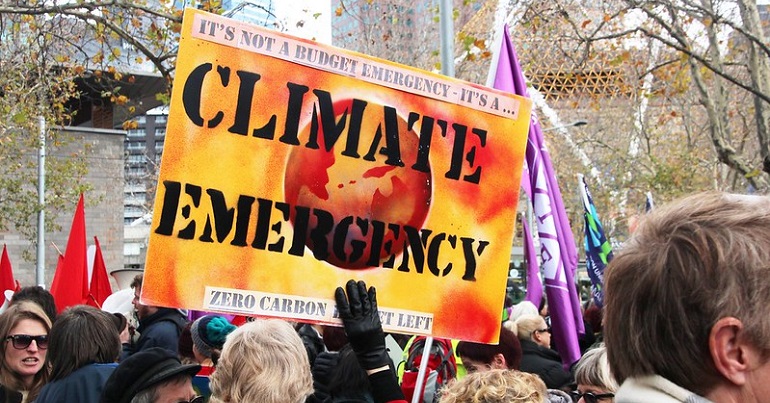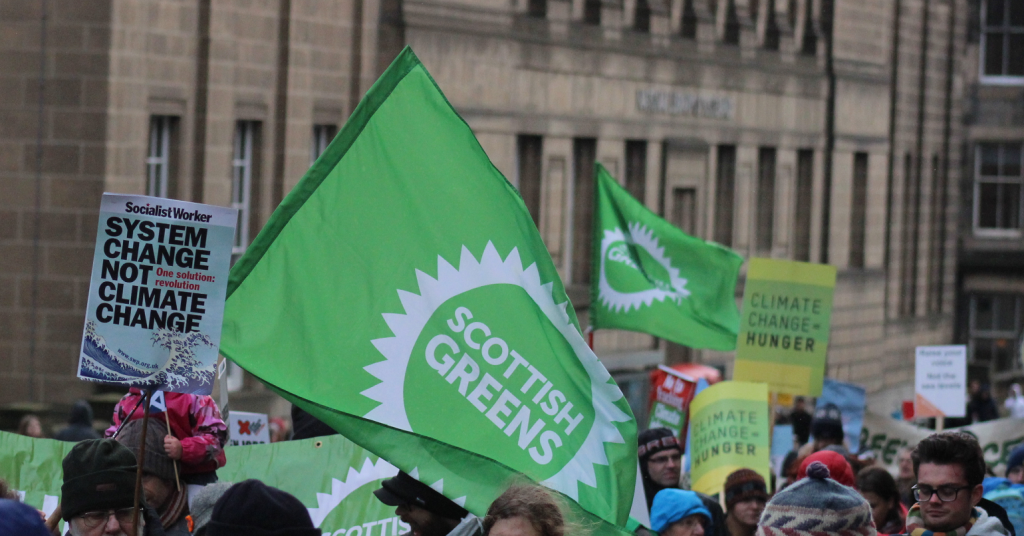What would life at two degrees of warming look like?

COP27 failed to make progress on reducing emissions and the awful reality is that our current economic and political system can’t deliver the necessary change, quickly enough. So have you started wondering how everyday life is going to change in the next ten years due to the climate emergency? It is a timescale that many of us can grasp. My grandchildren will be in their late twenties and I will be retired and struggling to keep the allotment in shape. What will your life be like and what will be the new normal?
A study last week made the point that Europe was already at two degrees of warming and already beyond the 1.5 degrees world average that the Paris accord was trying to avoid. Europe’s average temperature is up partly because we are a landmass which warms faster than the oceans. Northern Europe also includes a chunk of the Arctic Circle which is itself warming three times faster than the world average. Finally, we are rapidly losing the glacial mass in the Alps that had a cooling effect.
Let’s start with all those lovely holidays in mainland Europe. According to estimates, the summer of 2022 was the driest in 500 years, with widespread water shortage and wildfires affecting even those nations that are usually accustomed to wetter summers. While the weather will vary from year to year, the trend is for Europe to add at least another half a degree of warming every decade. That probably makes mid-summer holidays in many areas of southern Europe too hot to handle, with the holiday season spreading towards Easter and October half term.
As for skiing in winter, that starts to become a redundant skill. The 4,000 glaciers that cling to Alpine mountainsides have already lost 30m of depth since the 1990s and if we keep to existing emission levels we will be restricted to walking holidays only before the end of the century. It is remarkable to think about children skiing this winter who will show their grand children recordings of something that people used to do.
The stay at home vacation becomes more attractive, especially as society finally realises the real cost to the planet of all those flights that richer folks have been taking. However, as the 40 degrees of heat showed last summer, climate change is not all upsides for UK weather. Wildfires in London and elsewhere will cost lives and much of the housing, schools, offices and transport infrastructure built over the last two hundred years won’t cope with rapidly rising temperatures. It will be uncomfortable a lot of the time and people, especially old people, will die in the heat. There will also be more frequent ozone pollution episodes that will add to the premature deaths.
Local floods have already become more common. It is simple physics that warmer air holds more water and so, when it rains, it really rains. Governments and councils have allowed developers to build millions of homes on flood plains and despite billions spent on flood defences, the water is going to go where it needs to go. It will be harder to get insurance in the next decade and a lot more of us will be filling sand bags that we keep in a garden shed. People in urban areas like London have been busy over the last decade tarmacking their front gardens to fit more cars. The result is a lot of hard surface and flash floods. Being able to work from home, as long as it’s not flooded, will be a big upside as transport disruption becomes a regular feature of life in the UK rainy season.
Doing your research on floodplains and sea defences before buying a property is already essential, but the gradient of house/rental prices between those at the top of the hill and those below, is going to become more apparent. Top tip: if you want to study which areas get heavy rain, just track a map of sewage discharges.
Roses blossoming and tomatoes ripening as the clocks go back in October is a feature of this year’s gardening experience and the range of suitable plants for growing where we live is going to shift in the next decade. However, given that climate change already counts for significant part of the price rises in food at the supermarket, we may want to grow more veg of our own. At two degrees global warming the yield on many food crops declines substantially as you approach regions nearer the equator and the predictions are that many areas become uninhabitable. At a mere 1.5 degrees around 8% of the world’s farmland will become unsuitable for agriculture and by the early 2030s that adds another 10% to the average shopping basket.
Because some regions will become hotter far quicker than others, millions are going to be regularly threatened with starvation. Some countries will hit by repeated floods, like Pakistan, while others lose their long established sources of fresh water. People either die, or move, so it’s more than likely that the amount of arable land will decline and mass migration will be part of the new normal.
I predict that agricultural colleges will become a more popular choice for students and a curriculum that help the younger generations survive the climate emergency will join maths and English as part of what children learn in schools.
The good news is that many outdoor sports will become less of an endurance test for participants, parents and fans in winter. However, a lot of grassroots summer tournaments might be cancelled due to excessive heat. Indeed, the timetable for what sports can be played when, may have to shift. I know this summer’s drought led to many grassroots football matches being delayed a few weeks in September in the hope that rain would bring back the grass. There is also an increasing likelihood that around 23 league stadiums could get flooded and insurance premiums become too expensive for smaller clubs to afford.
Change is now inevitable. Please have a think about that and let me know how 2 degrees in the next decade will impact your life, work and enthusiasms. We will have to adapt and do everything we can to hold the line at two degrees. Beyond that level of global warming, even the relative sheltered British Isles will start to feel really horrible.
Jenny Jones is a Green Party member of the House of Lords
PS. We hope you enjoyed this article. Bright Green has got big plans for the future to publish many more articles like this. You can help make that happen. Please donate to Bright Green now donate to Bright Green now.
Image credit: John Englart – Creative Commons




Leave a Reply